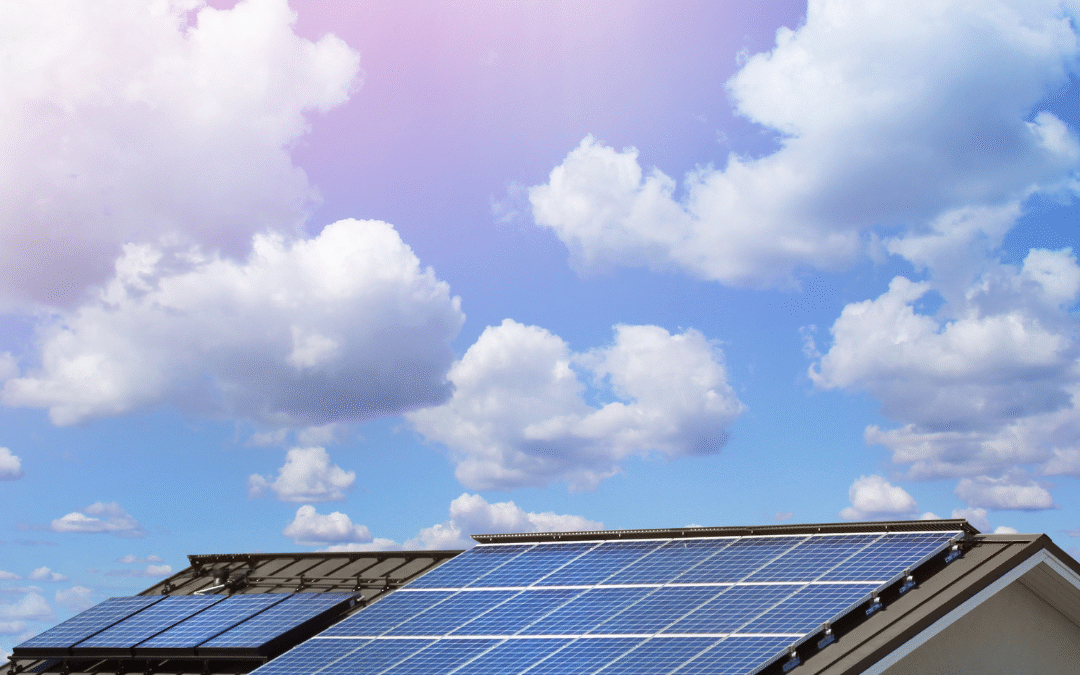With solar energy accounting for over 7% of total electricity generation in the U.S today, it’s no surprise that a growing number of people are interested in getting their own residential solar panels. After all, from reducing your carbon footprint to helping you save on electricity–the benefits of solar are undeniable.
But with all this talk about solar energy, have you ever wondered how solar panels actually work?
Most people know that panels convert sunlight into electricity for your needs but beyond that….the details are quite fuzzy.
Well, in this article we’ll explain exactly how solar panels work and what needs to happen for them to successfully convert the sun’s energy into electricity for your home or business. Take some good notes!
So… What are Solar Panels Made Of?
Here are the key components of a solar panel that work together to make sure your entire solar system performs efficiently:
Solar photovoltaic cells
These are essential components that are wired together to form a panel. They are usually made of silicon and they absorb sunlight to convert into electricity. They are typically made from monocrystalline (one single silicon crystal) or polycrystalline silicon (contains silicon fragments). Monocrystalline cells are more efficient (but also more expensive) since their structure allows for a better flow of electrons.
Glass Case
This is a durable cover that protects the solar cells from outside stressors while still allowing them to easily absorb sunlight.
Encapsulant
This is a clear layer that holds the cells together and shields them from moisture and dirt.
Backsheet
This is the bottom layer of the panel that is mostly made of polymer materials. It insulates the cells and protects them from heat and humidity.
The Frame
This is typically made of aluminium and it provides structural support for the cells. It also makes it easier for them to be mounted.
The Junction Box
This is located on the back of the panels and contains the wires necessary for safe transfer of electricity out of the panels.
How do Solar Panels Generate Electricity?
When solar photovoltaic cells absorb sunlight, the photons (tiny light particles) that make up sunlight transfer their energy to electrons (tiny particles with a negative electric charge) in the silicon atoms within the cells, knocking them loose. This movement of freed electrons creates a flow of direct current (DC) electricity, which travels in one direction. This process is known as the photovoltaic effect and it is essential in how solar panels generate electricity.
The thing is though, homes and businesses can only function with alternating current (AC) which flows in two directions. That’s why an inverter is needed to convert the DC electricity into AC so it can be used for your everyday needs. Depending on your solar system’s setup, you could use microinverters (attached to each panel) or a single string inverter for the whole solar system.
Keep in mind that if your system generates excess electricity, it can be stored in batteries for future use or sent back to the grid for net metering credits.
You can learn more about net metering here: What Is Net Metering and Is It Worth It for Solar Owners?
What are the Benefits of Solar Energy?
Now that we’ve covered the technical stuff, here’s a quick reminder of how getting set up with solar panels will benefit you in the long-run:
- Going solar will boost your home’s value: solar energy reduces your home’s dependence on utility-grade electricity, making it a lot more efficient. This signals to potential buyers that a home’s owners are forward-thinkers and care about the environment and this makes the property a lot more attractive to them.
- It will help reduce (and potentially eliminate) your electric bills: solar panels give you ownership over your electricity generation which means you’ll rely less on grid electricity. You will therefore need to purchase less electricity from the grid which helps lower your monthly electric bills. Moreover, depending on your state or utility policies, if your system produces more energy than you need, you can send it back to the grid and receive credits through net metering. These credits can be applied to future bills (especially during months when your system underproduces), potentially reducing those bills to zero.
- It helps decrease your carbon footprint: solar panels generate clean, renewable electricity with zero greenhouse gas emitted during the process. So relying on solar energy instead of fossil-fuel based energy reduces your home’s contribution to the emission of toxic gases like carbon dioxide. This lowers your overall carbon footprint, helps clean up the grid and contributes to a healthier, more sustainable future for you and your community.
You can learn more about the benefits of solar energy here: 5 Surprising Benefits of Rooftop Solar (Besides Lower Energy BIlls)
Now that you know more about the ins and outs of solar panels, are you ready to take the first step in going solar? If yes, feel free to book a consultation with one of our team members and they will guide you through the process and answer all your questions!

